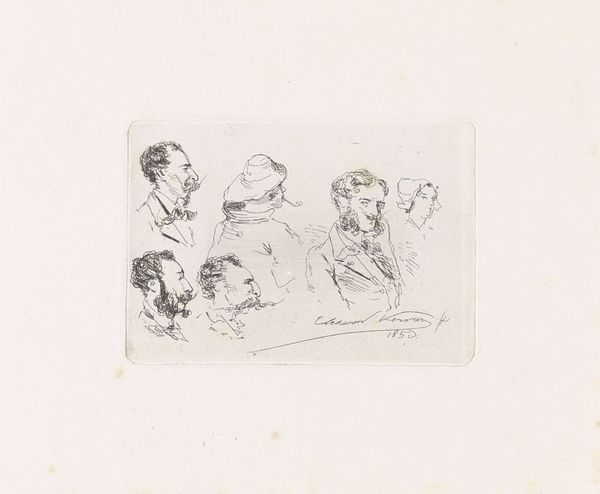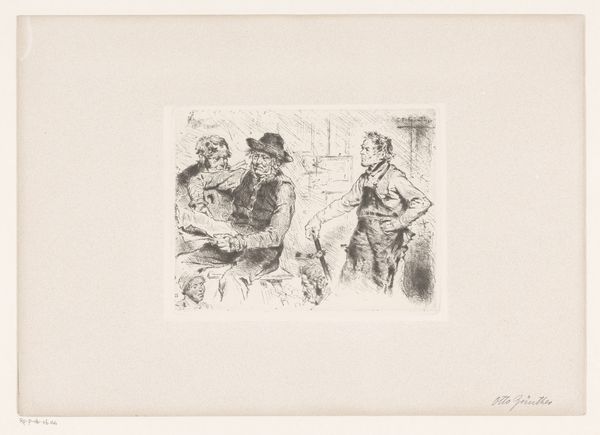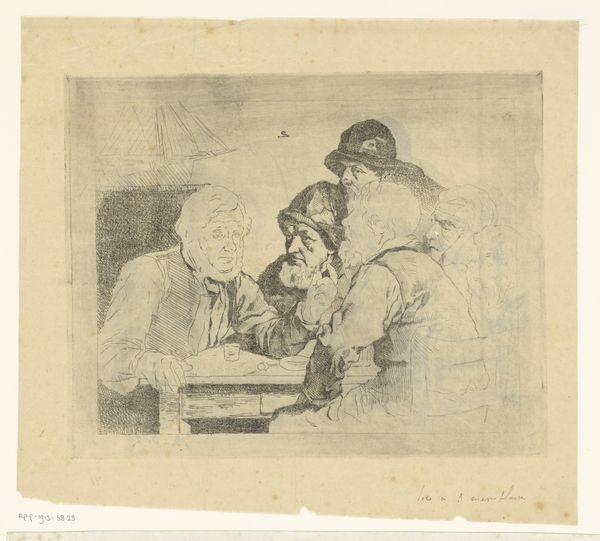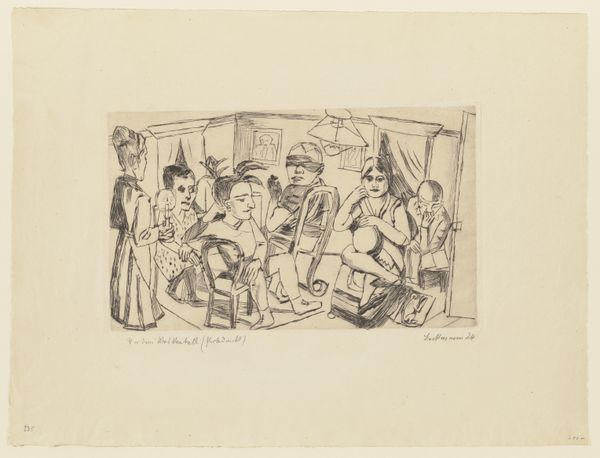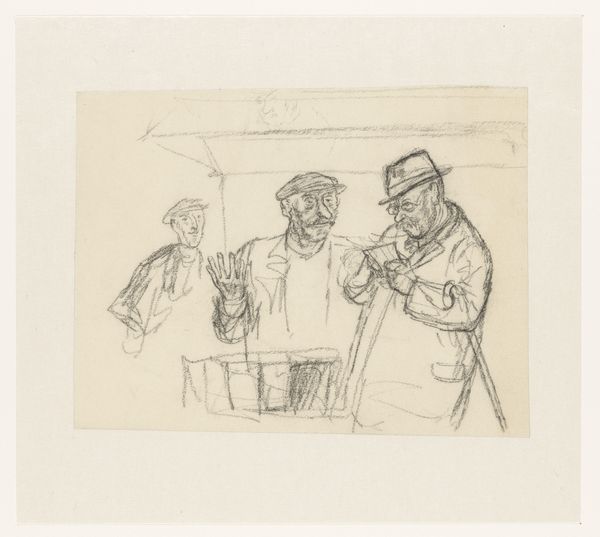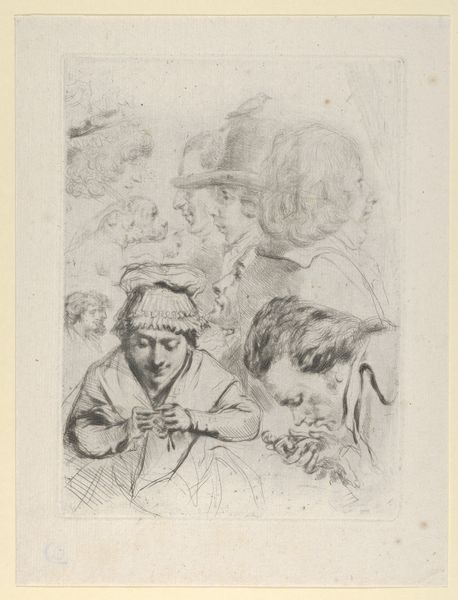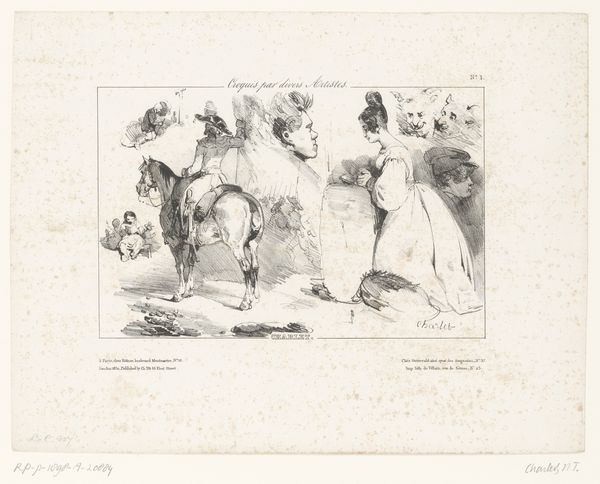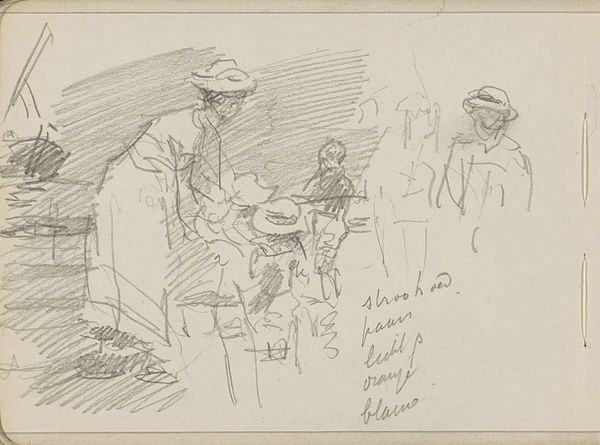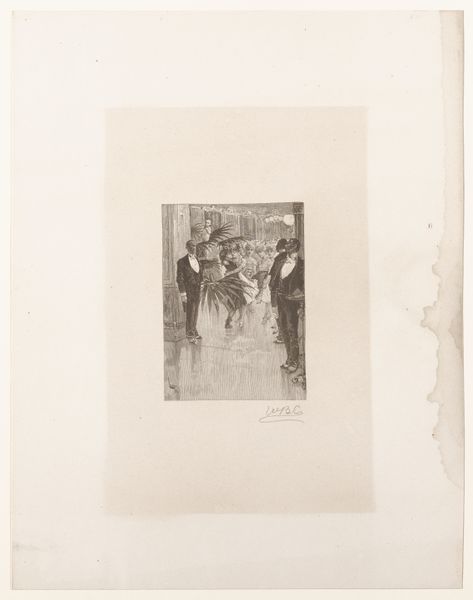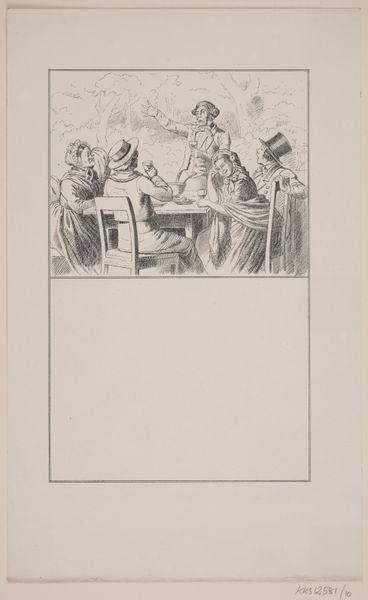
Compositie met vijf mannenhoofden, een hondenkop en twee bustes van vrouwen 1764
0:00
0:00
Dimensions: height 78 mm, width 108 mm
Copyright: Rijks Museum: Open Domain
Editor: We're looking at "Composition with Five Male Heads, a Dog's Head, and Two Female Busts," a pen and ink drawing on paper from 1764 by Jean Jacques de Boissieu. It's…almost like a sheet of character studies. What do you see in this collection of faces? Curator: Well, immediately, I'm drawn to consider the social function of portraiture during this period. This wasn't the age of photography, of course, so visual representations held immense cultural weight. The sheer number of faces here suggests an almost scientific approach to documenting different social types, wouldn't you agree? Editor: Scientific? I see more artistic license than clinical observation. The lines are so fluid and expressive, almost exaggerated. Curator: True, but think about the burgeoning Enlightenment project—the impulse to categorize and understand the world through observation. Genre painting during the Baroque period started playing with this and showing everyday life in sometimes absurd ways, don’t you think that the use of caricature, even gentle caricature, played a part in solidifying social hierarchies and power structures through representation in this artwork? Editor: That’s fascinating; I hadn’t thought about the social power embedded in the way they’re drawn. Curator: The dog’s head too, is not it an inclusion interesting by itself? Was it to denote fidelity, companionship or a form of hierarchy among living beings? The choice to put those images altogether makes us reflect on how the author valued the beings shown in the art. What do you think? Editor: I'm now realizing the layers here – it's not just a drawing of faces; it's a cultural document that reflects social dynamics and intellectual currents of its time. Curator: Precisely! Art rarely exists in a vacuum. This seemingly simple drawing offers a lens through which to examine the socio-political landscape of 18th-century Europe. Editor: I’ll never look at a portrait quite the same way. Thanks for the insightful perspective!
Comments
No comments
Be the first to comment and join the conversation on the ultimate creative platform.
